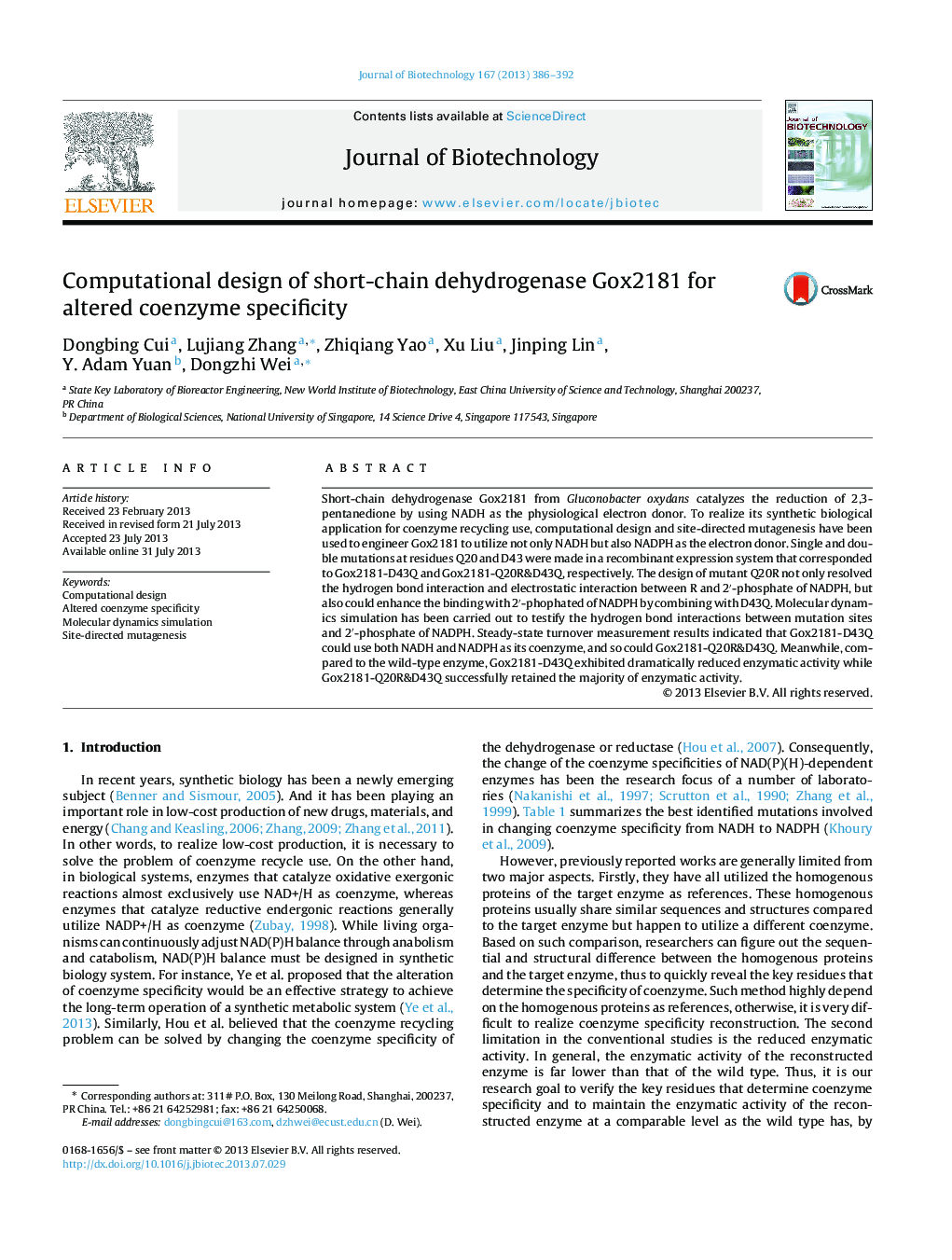| Article ID | Journal | Published Year | Pages | File Type |
|---|---|---|---|---|
| 6491776 | Journal of Biotechnology | 2013 | 7 Pages |
Abstract
Short-chain dehydrogenase Gox2181 from Gluconobacter oxydans catalyzes the reduction of 2,3-pentanedione by using NADH as the physiological electron donor. To realize its synthetic biological application for coenzyme recycling use, computational design and site-directed mutagenesis have been used to engineer Gox2181 to utilize not only NADH but also NADPH as the electron donor. Single and double mutations at residues Q20 and D43 were made in a recombinant expression system that corresponded to Gox2181-D43Q and Gox2181-Q20R&D43Q, respectively. The design of mutant Q20R not only resolved the hydrogen bond interaction and electrostatic interaction between R and 2â²-phosphate of NADPH, but also could enhance the binding with 2â²-phophated of NADPH by combining with D43Q. Molecular dynamics simulation has been carried out to testify the hydrogen bond interactions between mutation sites and 2â²-phosphate of NADPH. Steady-state turnover measurement results indicated that Gox2181-D43Q could use both NADH and NADPH as its coenzyme, and so could Gox2181-Q20R&D43Q. Meanwhile, compared to the wild-type enzyme, Gox2181-D43Q exhibited dramatically reduced enzymatic activity while Gox2181-Q20R&D43Q successfully retained the majority of enzymatic activity.
Related Topics
Physical Sciences and Engineering
Chemical Engineering
Bioengineering
Authors
Dongbing Cui, Lujiang Zhang, Zhiqiang Yao, Xu Liu, Jinping Lin, Y. Adam Yuan, Dongzhi Wei,
